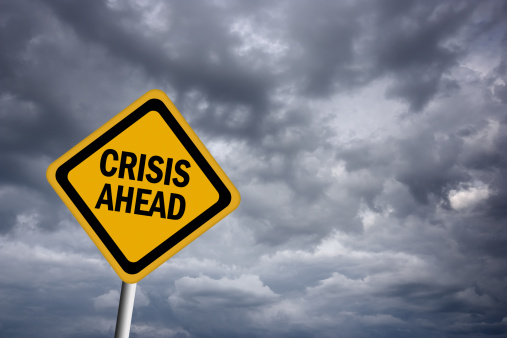By Dixie Somers
As a small business owner, you have more than enough on your plate, however, that often causes important tasks to take a back seat. One important step in setting up a business that is often ignored is getting a crisis management plan in place. Setting up a crisis management plan for your company is a way to keep employees and customers safe at all times whether you are in danger due to a natural weather disaster or another potential life-threatening situation involving violence, threats or even medical emergencies. It will also allow you to salvage your reputation and avoid bad press by responding promptly and properly to emergencies. Keep reading for a few tips to get you started with a crisis management plan that could save your business in the case of an emergency.
Assess Potential Situations
Before implementing a new crisis management plan for your company it is important to assess potential situations that may arise in the future, whether they are weather-related, medical emergencies or even violent and unsafe disasters. Your crisis management plan should be organized by situation—for example, you’ll have a plan and protocol for building lock downs, robberies, damage to the building, potential weather threats, etc. Having a protocol in place will allow you to avoid lawsuits with customers and employees, and won’t leave you unprepared when one of these situations comes up.
Consider Climate and Natural Surroundings
Consider the natural surroundings near your office or business workplace as well as the climate experienced in various seasons year-round. Creating an effective crisis management plan requires the knowledge of potential disasters such as hurricanes, tornadoes, hail storms and even snow storms depending on your geographical location.
With your natural surroundings, consider the dangers of your building—especially if you have a warehouse or factory on the premises. Plenty of businesses have experienced fires or explosions in their warehouses and weren’t prepared to handle damage done to inventory, or injuries sustained by employees. Have a protocol in place for these types of situations and thoroughly train any warehouse employees on how to react in each particular scenario.
Create an Extremely Detailed, Written Plan
Once you’ve assessed potential threats and dangerous situations that your company might find itself in, you need to write up a detailed plan so that your protocols can be documented. As mentioned before, you’ll want to organize your crisis plan according to situation. As you read through the crisis plan, you can find exactly what should be done during an earthquake, a robbery, a national security issue, etc. Under each situation, you need to list specifics of the response plan—like post-disaster meeting places, how to respond to customers, who to report to, and specific responsibilities for managers or executives. The more specific your plan is, the more capable you will be of responding quickly and efficiently in a dangerous or time-sensitive situation. Once the plan is written up, make copies and keep them in several areas around the office, at your home, and be sure to create digital copies that can be accessed from a remote location.
Place Safety Posters and Instructions around Workplace
For straightforward emergencies like a fire, earthquake, or robbery, you can post signs and posters around the workplace to help your employees understand how to react in these situations. Adding safety posters and instructions for exiting during emergencies can be done throughout the entire workplace, specifically where your employees spend their time. When dangerous or threatening situations occur during work hours, your employees are often separated from you or from one another, so posting instructions is your best bet for keeping everyone safe.
Call for Safety Meetings
Call for safety meetings frequently to review safety guidelines, especially during seasons that provoke any bad weather near you based on the climate of the region you are working in. Make sure that new employees are aware of all protocols in case of a disaster or emergency— you want to ensure that all your employees are fully informed of your emergency plans in order to keep as many people safe as possible. Call meetings with higher-ups and management so you can discuss what to do in the case of a rare or specific situation, like if your computer systems are hacked, or if an employee is hurt in an accident. Make sure all of your employees are given instructions regarding how they should respond to media inquiries after a disaster at the company. If an employee divulges information rather than saying, “no comment,” it could really hurt your company reputation and cause the post-disaster situation to spiral out of control. It’s also a good idea to appoint one person to deal with the press after a disaster to avoid misrepresentation or the formation or rumors.
Host Drills to Implement Safety Methods
If you want to ensure you have properly implemented a crisis management plan, it is important to host drills to teach employees how to handle any situation that may arise in the future while they are at work. Hosting drills should be done at least once or twice annually, especially when working with new employees and individuals involved with your company. If any changes are made to your crisis management plan, you need to provide employees with updated copies in case they have questions, or if there are misunderstandings.
Implementing proper safety plans and crisis management protocols for employees and anyone working within your company is essential to keep individuals safe from all potential disasters and preventing devastation to your company because of a disaster. Routinely reviewing safety plans and how to manage crisis situations within the workplace is also highly advisable to keep your employees and everyone involved with your company informed at all times. No matter how small your business is, you can easily be wiped out by a natural disaster, a scandal you aren’t prepared for, or a loss for the company that can’t be rectified. When you have a backup plan and protocol for employees, you are setting your business up for quick recovery and rebuilding. Without a plan, you could end up being out of business for months, or even permanently. The information for this article was provided by the professionals of 911 Industrial Response Inc. who specialize in safety services in Hinton and help companies after accidents or emergencies.
Dixie Somers is an Arizona-based freelance writer. Follow her @DixieSomers.







